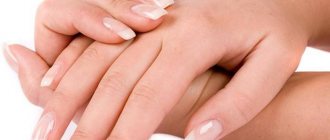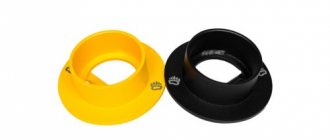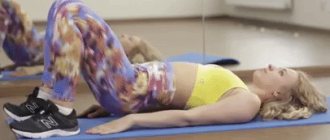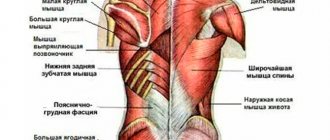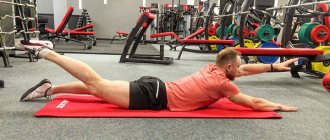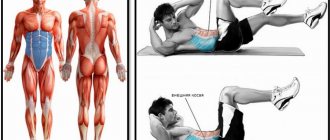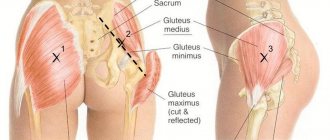A strong handshake, lifting a weightlifter in competition, the decisive puck of a match and a new record in pull-ups - all these actions are united by one connecting link, they are impossible without a strong grip.
What is a strong grip? This can be described as the ability to apply suitable force using the muscles of the hands and fingers to a foreign object in order to achieve the desired result for the required time.
This ability and the developed muscles of the hand will be useful in everyday life, has a certain aesthetic character and is not the least important in the training of athletes in various sports. Martial arts, sports and street gymnastics, rock climbing, training with external weights (weightlifting, powerlifting, kettlebell lifting), game sports (hockey, tennis), crossfit, as well as arm lifting and arm wrestling where it is one of the fundamental elements.
In this article we will look at how to develop a universal grip, as well as pump up the muscles of your hands and fingers at home. It is worth noting that there will be no specialization here, and the information and techniques presented will be useful both for beginner athletes of all the above-mentioned areas, as well as for healthy lifestyle enthusiasts and anyone who trains at home.
Theory and basics
The human hand is nothing more than a complex mechanism that works very skillfully and is capable of performing all kinds of tasks. If you decide to improve the mechanism, you must understand: 1. how it works 2. what methods can be used to achieve the desired result. So a little theory.
Anatomically, the human forearm and hand include 31 bones, 15 joints and 38 muscles, which in the context of interest to us are capable of being responsible for the following functions:
- flexion/extension and abduction/adduction of fingers;
- flexion/extension and abduction/adduction of the hand;
- pronation (inward rotation)/supination (outward rotation) of the hand.
Training plans and classes should take into account each of these features, with the goal of harmonious development and strengthening of the hand. The training itself, in turn, is subject to very simple laws that lead to success. This:
- Regularity. One workout will bring absolutely no results; the load must be repeated so that the body adapts to constant work and becomes stronger. Picking up an expander once is not enough; you will have to use it again and again to achieve the desired result.
Number of classes. An indicator that is very important for the progress of every athlete. Chaotic training does not give a stable result, just as too infrequent load does not stimulate adaptation. We took the expander only once a month - it’s the same as if we never took it.
Progression of loads. The load must change, only this can force our body to continue adapting and, as a result, become stronger. You will not be able to develop the interosseous muscles of the hand with the same expander; only squeezing it becomes easy - progress will stop, since you have adapted to this load, and no new stimulus has arrived.
Simplicity. The truth is simple: the simpler the program, the more difficult it is to spoil it. You shouldn’t look for any secrets or complex techniques in the first steps; linear progression (more/longer/stronger) and a smooth transition from simpler exercises to more complex ones is a formula for success and a proper foundation at the beginning of this path.
Types of loads, extreme, which we will talk about before the practical part. Similar to having a complete set of tools or ingredients, only using all the load options makes it possible to build a versatile grip. So, according to work, we can highlight:
- Static load. Work that keeps the muscles in a tense state for the required period of time - hangs, supports, holds.
- Dynamic load. Work in which the muscles of the hands contract and relax throughout the approach - squeezing-unclamping, flexion-extension.
Now we come to the most important thing, the exercises that are worth working with and the training protocols that will allow you to combine them into a full-fledged workout. We tried to select exercises that do not require special equipment and will be accessible to everyone, so we’ll start with them:
Other methods
There are other ways. They are very useful in solving the question - how to strengthen your wrists for striking?
- The bucket is filled with rice. You need to stick your hands inside and take out the largest volumes of rice and squeeze it powerfully in your hand.
- Using the hardest wrist expander. You need to act alternately with both hands. The compression of the projectile should be sharp. Give it your all.
- Jumping on fists. The position is as if you were about to do push-ups with your fists. Jump on them. You can jump higher, clap your hands, clench your fists and land on them.
You can strengthen your wrists for boxing using the following methods. Vary the difficulty of their execution and gradually develop the load.
There are exercises to strengthen the hand and wrist in such a specific discipline as yoga.
In yoga, wrist strengthening occurs through this pose - downward-facing dog. Both arms and legs must be properly aligned here. In this pose you need to be in several breathing circles. The mass is equally distributed between the arms and legs. Both your back and shoulders straighten.
These are the basic postulates and principles in this discipline. Their strict adherence will help to effectively strengthen the muscles of the arms and shoulders. For beginners, mentors recommend not to rush and not to put unnecessary emphasis on the muscles.
For this reason, at the first stage these principles are practiced in a simplified version of the pose - against the wall. This reduces the impact on your hands. Having perfected the correct technique for using your hands, you can take the full version of this pose.
It is also necessary to use a complete, detailed methodology. Her points:
- Hand position is shoulder width apart.
- The mass spreads evenly throughout the palm. The emphasis is on the radial zone.
- You need to press on the surface with the zones that are indicated in the image by dark green and light green circles.
- Your arms should be completely straight. You need to activate your triceps. Press them firmly against the wall.
- Time to open the shoulders and chest.
- The shoulders turn outward. Forearms - inward.
- The shoulder blades are directed towards the tailbone.
- The head is held between the shoulders. The neck muscles are in a slight free tone.
By following this technique, you can transform any emphasis into an effective exercise for developing your wrists.
There are easier ways in yoga for the same purposes.
- The wrists extend and flex. Light dumbbells are used. You can simply clench your fists and act with it. You need 3 approaches. Each one has 12-15 repetitions.
The starting position is sitting or standing. The wrists are turned so that the palms are down. They slowly extend to the full range of motion. At the top point, freeze for a moment and bend them again. Avoid overstraining your muscles.
- Analogous to point 1. Only palms up.
- Using a small ball. Any suitable ball, such as a tennis ball, will do here. It needs to be squeezed as tightly as possible. Duration of action - 5 seconds. The number of repetitions is 10. After which the exercise is performed with the other hand.
Hanging on the bar
One of the most accessible exercises in today's series, which specifically engages the flexor muscles in a static load. Its basic variation is hanging without your feet touching the floor, with a straight, closed grip. As soon as you overcome the 60-second mark in several approaches, feel free to move on to more complex options, the number of which is limited only by your imagination. As the next step, you can master hanging on a towel or rope, on a wider surface or wearing gloves (in order to increase the diameter of the grip), as well as hanging on non-standard supports (triangular, square, etc.). The height of virtuosity is hanging on one hand, hanging on your fingertips or with an incomplete amount of their use, which should not be switched to immediately and with training experience under your belt. Beginners who cannot hang for 10 seconds can scale this exercise by using a low bar or parallel bars hang.
Supports on palms-fists-fingers
The second publicly available exercise from our list, which will enable all the muscles of the hand to work in a static mode. Since the classic version of this movement involves the position of push-ups from the floor with emphasis on the fingers, it is worth paying attention that it is necessary to prepare for this exercise very carefully and carefully so as not to get injured. So, the first thing we start with is emphasis on the palms and fists, which the athlete must endure comfortably and painlessly for 60 seconds in several approaches. Next, we choose any elevation that is above our feet (for example, a table) and first try to carefully transfer the body weight onto our fingers and, as a result, stand. As you pass the 1 minute mark, gradually use the mark lower and lower until you find yourself on the floor. The advanced level is a smooth rise of the feet relative to the support of the hands while maintaining an even position of the body. Hands on the floor - feet on a bench, chair, table, etc.
Complex two. Stretching
Here's how to strengthen your wrist ligaments. The following exercises are performed:
You need to sit on the surface on your feet. Palms are in front of the eyes. The position of the fingers is the same. The body is retracted to the rear. An angle develops at the wrist. At the extreme mark you need to freeze for 3-5 seconds. Then there is a return back and repetition of the reception. The technique is performed 5-10 times.
- Stretch and clench your fists.
You need to sit on the floor. Definitely on your feet. The hands are placed in front of you with the back part on the floor surface. The fingers are facing each other. Elbows are straight. Part of the mass goes into your hands. This way the muscles stretch better. The fingers reach towards the center of the palm. Try to clench your fists. Number of repetitions – 8. Approaches – 4.
These actions should be performed 1-2 times in seven days. For you, this will be a solution to the dilemma of how to strengthen your wrists in a short time. And your grip power will increase, and you will protect yourself from potential injuries.
When developing your wrist, keep in mind that it is a joint. And all the work is aimed at strengthening the muscles around it. The indicated exercises and other training sets help develop these muscles and strengthen the wrist joints. Everything should be activated here, even the smallest muscles.
Your wrists will become stronger and more flexible if you jump rope every day. You should jump at a fast pace. Only brushes should work. They rotate in different directions. You can make two turns in one jump. With such intense work, you can strengthen your hand and wrist.
A series of exercises using a shovel handle
This list of movements is combined into one item, since it requires the same equipment, which forces almost all muscles to work in a dynamic mode. We will need a shovel handle (a mop or any other strong rod), any rope, as well as any kind of weight that we can tie. Such a simple design is quite enough for training, the main thing is not to forget about the following. As stated earlier, the weight of the burden should increase over time (this could be a bottle, eggplant or bucket in which you change the amount or density of the filler). Here is a list of exercises that can be performed using such a simulator:
- flexion of the forearm with transfer of the projectile to the fingers and back;
- forearm extension;
- forearm flexion rotation with weight movement;
- rotation for forearm extension with weight movement.
It is enough to pass the mark of 50 repetitions to move on to heavier weights.
Doctors' advice
In order for the implementation of therapeutic exercises to be effective and not cause harm to patients, it is necessary to adhere to the following recommendations:
- Repeat the set of exercises on both limbs.
- Maintain a leisurely rhythm when performing exercises, maintain a clear and calm breathing pace.
- Perform exercises regularly and systematically.
Movements should be simple and not cause pain when performed. Otherwise, there is a risk of developing joint arthritis and other diseases.
Repeat a set of exercises on both limbs
Before starting the exercises, it is recommended to visit your doctor. He will be able to recommend the most suitable exercises. Each of them consists of 5-15 repetitions.
Additional Information. At the beginning it is difficult to perform some exercises, but over time the joints become stronger and the accuracy of movements increases.
Gymnastics for the hands is an effective means of restoring the health of these organs. Knowing how to do the exercises correctly can be beneficial and improve the condition of your hands.
Finger extension with rubber bands
This exercise is one of the few that can make the proper adjustment and balance the finger flexors, which are almost always under load. For work we need a package of stationery erasers. Our task is to put several copies on the outer phalanges to perform a powerful extension, and then smoothly compress them back. As with the last exercise, reaching 50 reps is a sign that you need to add some bands to your next workout.
Development of isometric strength
This area is well mastered by representatives of power shows, who bend, tear and crush various objects with their own hands in their performances. The essence of these exercises is to apply maximum effort to counteract the resistance of another object for a short time (6-12 seconds). The general rules for isometric exercises are as follows:
- exercises are performed while inhaling;
- the effort during the exercise is increased gradually to maximum;
- The duration of the exercise is no more than 10 - 12 seconds for experienced athletes (for beginners no more than 5-6), while the maximum effort lasts no more than 2 - 3 seconds.
Examples of exercises include attempts to bend or break any strong rod (the same handle from a shovel will do) and squeezing a tennis ball with your full palm or only with your fingers. The first exercise will also be useful because it makes it possible to strengthen the muscles responsible for pronation/supination and abduction/adduction of the hand, without the use of new equipment. As a measure of progress over time, in addition to using indestructible objects, you can also use those that can be deformed. Try bending nails, crushing vegetables or fruits, cracking raw eggs, etc.
Building a workout to develop grip strength will not be radically different from building any other workout. It should include:
Post-Stretch Methods
It's not uncommon for people to sprain their wrists. And the question arises - how best to strengthen the wrists after a sprain? You should do these exercises:
- Squeeze the rubber ball. This will prevent your wrists from becoming stiff. You need to squeeze the ball and hold it for 5-10 seconds. The frequency of execution is at least 3-4 times a day.
- Using cans of canned food. Take it in your hand and position your wrist in a horizontal position. Palm facing up. Hold the container while slowly bending your wrist forward and returning to its starting position. Number of approaches – 3. Reps in each – 10.
- Similar to step 2, only the jar is held with the palm down.
A sprained wrist can be treated with more than just medications. Similar physiotherapeutic exercises are also necessary. Before performing them, you must consult a doctor. Because some exercises can only complicate the situation, and some you can perform incorrectly.
Special warm-up
Performed before the main work in order to reach the current volume of training. In a special warm-up, movements are used that are similar to those in training or as close as possible with an intensity of 50% or lower.
Eg:
- — when setting 3x50 finger extensions with 20 rubber bands, it would be appropriate to perform several warm-up approaches for 10-15 repetitions, gradually increasing the number of rubber bands from minimally noticeable to working;
- - if the workout includes hanging on the horizontal bar for 3x60 seconds, as warm-up approaches you can hang for 10-15-20 seconds, respectively, etc.

